Art
Advertising
- Advertising
- Tin (Cassiterite) Distribution: Mediterranean Bronze Age
- Archaeological Sites of the Aegean Minoans
- Extent of Santorini Eruption's Tsunami Inundation of Minoan Crete
- End of Minoan Linear A Writing and LM IB Fire Destruction of Crete
-
The Cause of the End of the Bronze Age
with the Scientific Method -
Nature Geoscience Journal and
Late Minoan IB Destruction Event - Prehistoric Star Navigation, Eastern Mediterranean Ethnocentric Bias, and the "Cabal of Certainty"
- Theoretical Bronze Age Minoan Heliographic Aegean Network Validated by 92.15 Mile (148.3 Km) Mirror Sunlight Flashes
- The Validation of a Bronze Age Minoan Heliographic Aegean Network in Southern California
- Tsunami Generation from the Titanic Bronze Age Minoan Eruption of the Santorini Marine Volcano
- The Cento Camerelle Mines of Tuscany: A Major Bronze Age Source of Tin
- No Men or Sails Required: Successful Prehistoric Sea Travel
- Minoan Downfall and Volcanology's Black Hole of Unknowns
- Homer and Navigating by the Stars in Prehistory
- Primacy of Human Powered Rowing in Copper Age and Minoan Shipping
- Minoan Invention of the True Dome and Arch Prehistoric Mediterranean Catenary Architecture
- "Sinking Atlantis" Tsunami Myth Debunked
- Minoan Tholos Structural Mechanics and the Garlo Well Temple
- Minoan Web of Mirrors and Scripts
- Santorini Eruption and LM IB Destruction
- Minoan Catastrophe: Pyroclastic Surge Theory
- Early Minoan Colonization of Spain
- Origin of the Sea Peoples
- Minoan Ship Construction
- Minoan Maritime Navigation
- Ringed Islands of Thera, Santorini, Greece
- Minoan Scientific Tradition
GIS Google Earth
Publications
Publications
Official Art Gallery
A Collection of 20 Paintings each with over 70 Art Products
Prof. Floyd W. McCoy (Emeritus WCC/Grad. Fac. UHM) is the Professor of Geology and Oceanography with the Department of Natural Sciences at the University of Hawaii, Windward College. He holds his degrees from Harvard University (Ph.D.) and the University of Hawaii, Honolulu. His current research interests include the Late Bronze Age eruption of Thera (Greece), the paleoclimate of the Eastern Mediterranean, sedimentology of tsunami deposits (Greece, Italy, Turkey, and Hawaii), surveys of the Aegean and Mediterranean sea floor, production of hyaloclastites at Hawaii, and Hawaiian geoarchaeological and geophysical surveys. His work on the eruption of Thera has been featured in a number of television programs, including on the BBC, NBC, the Learning Channel, National Geographic, and Discovery. Professor McCoy is an AIA Joukowsky Lecturer for 2017/2018. We have been colleagues for a long time. He graciously introduced me to this Nature Geoscience Journal article with the comment, "and you will love it!!! You are vindicated, and I was wrong...". "Wanted you to have advance notice!!!".
The author W. Sheppard Baird discusses the probability that a pyroclastic flow(s) of superheated dry steam traveled at very high speed over 110 kilometers of sea water to incinerate large areas of the island of Crete during the Bronze Age eruption of the Santorini volcano.
The author W. Sheppard Baird discusses the probability that a pyroclastic flow(s) of superheated dry steam traveled at very high speed over 110 kilometers of sea water to incinerate large areas of the island of Crete during the Bronze Age eruption of the Santorini volcano.

Minoan Depiction of the Ringed Islands of Thera
Minoan Miniature Frieze Admirals Flotilla Restoration Fresco
Late Bronze Age (LBA)
Neo-Palatial Late Minoan I Period
West House, Room 5, South Wall
Akrotiri, Santorini, Greece
Minoan Miniature Frieze Admirals Flotilla Restoration Fresco
Late Bronze Age (LBA)
Neo-Palatial Late Minoan I Period
West House, Room 5, South Wall
Akrotiri, Santorini, Greece
The Minoan Catastrophe: The Theran Pyroclastic Surge Theory
This paper is W. Sheppard Baird's introduction of the hypothesis that massive pyroclastic superheated steam surge activity from the great Bronze Age eruption of the Santorini marine volcano may have been the primary causal event for the destruction of Neo-Palatial Minoan Crete in the Aegean. This concept was born during the extensive research program that became the foundation for my book - 'The Minoan Psychopath'.
The Bronze Age Eruption of Santorini and Late Minoan IB Destruction Event
This publication is an examination of the evidence that links the mysterious Late Minoan IB Destruction Event (Horizon) that apparently destroyed much of Minoan Neo-Palatial Crete by fire to massive pyroclastic superheated steam surge activity from the great Bronze Age eruption of the Santorini marine volcano. This puzzling destruction of Minoan Crete has never been explained by science until the introduction of this theory.
The End of Minoan Linear A Writing and the Late Minoan IB Fire Destruction of Crete
My original intention was to simply provide a sound educational GIS publication for those interested in the temporal geographical distribution of the archaeological sites associated with the excavated finds of Minoan Hieroglyphics, Linear A, Trojan Script, and Mycenaean Linear B from the Bronze Age Aegean. When I completed this work I was stunned by the realization of just how truly comprehensive and devastating the Late Minoan IB Fire Destruction of Crete was.
J. Preine et al., "Hazardous Explosive Eruptions of a Recharging Multi-Cyclic Island Arc Caldera",
Nature Geoscience Journal, 2024.
Nature Geoscience Journal, 2024.
Bibliography:
J. Preine et al., "Hazardous Explosive Eruptions of a Recharging Multi-Cyclic Island Arc Caldera", Nature Geoscience Journal, 2024.
S. Carey, S. Sigurdsson, C. Mandeville, S. Bronto. "Pyroclastic Flows and Surges over Water: an Example from the 1883 Krakatau Eruption". Bulletin of Volcanology. 1995.
Timothy H. Druitt, L. Edwards. "Santorini Volcano". 1999.
Jennifer Susan Gilbert, Robert Stephen John Sparks. "The Physics of Explosive Volcanic Eruptions". T. H. Druitt. "Pyroclastic Density Currents". p. 145. Geological Society 1998.
F. W. McCoy, G. Heiken. "The Late-Bronze Age explosive eruption of Thera (Santorini), Greece: Regional and local effects". Geological Society of America. 2000.
U.S. Geological Survey: Volcano Hazards Program.
Walter L. Friedrich, Bernd Kromer, Michael Friedrich, Jan Heinemeier, Tom Pfeiffer, Sahra Talamo. "Santorini Eruption Radiocarbon Dated to 1627-1600 B.C.". 2006.
J. V. Luce, C. Doumas. "The Chronology of the LM I Destruction Horizons in Thera and Crete". "Thera and the Aegean World I". Second International Scientific Congress. Santorini, Greece, pp. 785-789, 1978.
W. S. Downey, D. H. Tarling. "Archaeomagnetic Results from Late Minoan Destruction Levels on Crete and the 'Minoan' Tephra on Thera". "Thera and the Aegean World III". Volume Three: "Chronology", Proceedings of the Third International Congress, Santorini, Greece, pp. 146 - 159, 3-9 September 1989.
Rutter, Jeremy B. Lesson 14: Late Minoan Painting and Other Representational Art: Pottery, Frescoes, Steatite Vases, Ivories, and Bronzes. Aegean Prehistoric Archaeology. Dartmouth College. March 18, 2000.
C. Doumas, A. Papagiannopoulou. "A Study of Middle and Late Cycladic Pottery from Akrotiri". Thera and the Aegean World III. Volume One: "Archaeology". Proceedings of the Third International Congress, Santorini, Greece, pp. 441-448, 1989.
M. Marthari. "Investigation of the Technology of Manufacture of the Local LBA Theran Pottery: Archaeological Consideration". Thera and the Aegean World III. Volume One: "Archaeology". Proceedings of the Third International Congress, Santorini, Greece, pp. 449-458, 1989.
Joseph W. Shaw, Aleydis Van de Moortel, Peter M. Day, Vassilis Kilikoglou. "A LM IA Ceramic Kiln in South- Central Crete: Function and Pottery Production". American School of Classical Studies, Hesperia, Supplement 30, 2001.
Rutter, Jeremy B. Lesson 17: Akrotiri on Thera, the Santorini Volcano and the Middle and Late Cycladic Periods in the Central Aegean Islands. Aegean Prehistoric Archaeology. Dartmouth College. March 18, 2000.
S. Carey, S. Sigurdsson, C. Mandeville, S. Bronto. "Pyroclastic Flows and Surges over Water: an Example from the 1883 Krakatau Eruption". Bulletin of Volcanology. 1995.
T. H. Druitt, L. Edwards, R. M. Mellors, D. M. Pyle, R. S. J. Sparks, M. Lanphere, M. Davies, B. Barriero. "Santorini Volcano". 1999.
Jennifer Susan Gilbert, Robert Stephen John Sparks. "The Physics of Explosive Volcanic Eruptions". T. H. Druitt. "Pyroclastic Density Currents". p. 145. Geological Society 1998.
John G. Younger. "Linear A Texts in phonetic transcription and Commentary". 2009.
John G. Younger. "The Cretan Hieroglyphic Texts". 2008.
W. Sheppard Baird. "The End of Minoan Linear A Writing and the LM IB Fire Destruction of Crete". 2009.
W. Sheppard Baird. "The Extent of the Santorini Eruption's Tsunami Inundation of Minoan Crete". 2008.
W. Sheppard Baird. "The Archaeological Sites of the Aegean Minoans". 2008.
W. Sheppard Baird. "The Minoan Catastrophe: The Theran Pyroclastic Surge Theory". 2007.
Sturt W. Manning, Christopher Bronk Ramsey, Walter Kutschera, Thomas Higham, Bernd Kromer, Peter Steier, Eva M. Wild. Chronology for the Aegean Late Bronze Age 1700-1400 B.C. 2006.
Rupert A. Housley, Sturt W. Manning, Gerald Cadogan, Richard E. Jones and Robert E. M. Hedges. Radiocarbon, Calibration, and the Chronology of the Late Minoan IB Phase. 1999.
OxCal Program. Oxford Radiocarbon Accelerator Unit. University of Oxford.
P. Reimer, et al. INTCAL04 Terrestrial Radiocarbon Age Calibration, 0-26 CAL KYR BP. Radiocarbon, Vol 46, Nr 3, 2004, p 1029-1058.
Radiocarbon: An International Journal of Cosmogenic Isotope Research
Radiocarbon WEB-info. Tom Higham, Radiocarbon Laboratory, University of Waikato, New Zealand.
Works Cited:
** Druitt, T. H. and Francaviglia, V. "Caldera formation on Santorini and the physiography of the islands in the late Bronze Age". Bulletin of Volcanology, Vol. 54, No. 6, p. 484-493. 1992.
J. Preine et al., "Hazardous Explosive Eruptions of a Recharging Multi-Cyclic Island Arc Caldera", Nature Geoscience Journal, 2024.
S. Carey, S. Sigurdsson, C. Mandeville, S. Bronto. "Pyroclastic Flows and Surges over Water: an Example from the 1883 Krakatau Eruption". Bulletin of Volcanology. 1995.
Timothy H. Druitt, L. Edwards. "Santorini Volcano". 1999.
Jennifer Susan Gilbert, Robert Stephen John Sparks. "The Physics of Explosive Volcanic Eruptions". T. H. Druitt. "Pyroclastic Density Currents". p. 145. Geological Society 1998.
F. W. McCoy, G. Heiken. "The Late-Bronze Age explosive eruption of Thera (Santorini), Greece: Regional and local effects". Geological Society of America. 2000.
U.S. Geological Survey: Volcano Hazards Program.
Walter L. Friedrich, Bernd Kromer, Michael Friedrich, Jan Heinemeier, Tom Pfeiffer, Sahra Talamo. "Santorini Eruption Radiocarbon Dated to 1627-1600 B.C.". 2006.
J. V. Luce, C. Doumas. "The Chronology of the LM I Destruction Horizons in Thera and Crete". "Thera and the Aegean World I". Second International Scientific Congress. Santorini, Greece, pp. 785-789, 1978.
W. S. Downey, D. H. Tarling. "Archaeomagnetic Results from Late Minoan Destruction Levels on Crete and the 'Minoan' Tephra on Thera". "Thera and the Aegean World III". Volume Three: "Chronology", Proceedings of the Third International Congress, Santorini, Greece, pp. 146 - 159, 3-9 September 1989.
Rutter, Jeremy B. Lesson 14: Late Minoan Painting and Other Representational Art: Pottery, Frescoes, Steatite Vases, Ivories, and Bronzes. Aegean Prehistoric Archaeology. Dartmouth College. March 18, 2000.
C. Doumas, A. Papagiannopoulou. "A Study of Middle and Late Cycladic Pottery from Akrotiri". Thera and the Aegean World III. Volume One: "Archaeology". Proceedings of the Third International Congress, Santorini, Greece, pp. 441-448, 1989.
M. Marthari. "Investigation of the Technology of Manufacture of the Local LBA Theran Pottery: Archaeological Consideration". Thera and the Aegean World III. Volume One: "Archaeology". Proceedings of the Third International Congress, Santorini, Greece, pp. 449-458, 1989.
Joseph W. Shaw, Aleydis Van de Moortel, Peter M. Day, Vassilis Kilikoglou. "A LM IA Ceramic Kiln in South- Central Crete: Function and Pottery Production". American School of Classical Studies, Hesperia, Supplement 30, 2001.
Rutter, Jeremy B. Lesson 17: Akrotiri on Thera, the Santorini Volcano and the Middle and Late Cycladic Periods in the Central Aegean Islands. Aegean Prehistoric Archaeology. Dartmouth College. March 18, 2000.
S. Carey, S. Sigurdsson, C. Mandeville, S. Bronto. "Pyroclastic Flows and Surges over Water: an Example from the 1883 Krakatau Eruption". Bulletin of Volcanology. 1995.
T. H. Druitt, L. Edwards, R. M. Mellors, D. M. Pyle, R. S. J. Sparks, M. Lanphere, M. Davies, B. Barriero. "Santorini Volcano". 1999.
Jennifer Susan Gilbert, Robert Stephen John Sparks. "The Physics of Explosive Volcanic Eruptions". T. H. Druitt. "Pyroclastic Density Currents". p. 145. Geological Society 1998.
John G. Younger. "Linear A Texts in phonetic transcription and Commentary". 2009.
John G. Younger. "The Cretan Hieroglyphic Texts". 2008.
W. Sheppard Baird. "The End of Minoan Linear A Writing and the LM IB Fire Destruction of Crete". 2009.
W. Sheppard Baird. "The Extent of the Santorini Eruption's Tsunami Inundation of Minoan Crete". 2008.
W. Sheppard Baird. "The Archaeological Sites of the Aegean Minoans". 2008.
W. Sheppard Baird. "The Minoan Catastrophe: The Theran Pyroclastic Surge Theory". 2007.
Sturt W. Manning, Christopher Bronk Ramsey, Walter Kutschera, Thomas Higham, Bernd Kromer, Peter Steier, Eva M. Wild. Chronology for the Aegean Late Bronze Age 1700-1400 B.C. 2006.
Rupert A. Housley, Sturt W. Manning, Gerald Cadogan, Richard E. Jones and Robert E. M. Hedges. Radiocarbon, Calibration, and the Chronology of the Late Minoan IB Phase. 1999.
OxCal Program. Oxford Radiocarbon Accelerator Unit. University of Oxford.
P. Reimer, et al. INTCAL04 Terrestrial Radiocarbon Age Calibration, 0-26 CAL KYR BP. Radiocarbon, Vol 46, Nr 3, 2004, p 1029-1058.
Radiocarbon: An International Journal of Cosmogenic Isotope Research
Radiocarbon WEB-info. Tom Higham, Radiocarbon Laboratory, University of Waikato, New Zealand.
Works Cited:
** Druitt, T. H. and Francaviglia, V. "Caldera formation on Santorini and the physiography of the islands in the late Bronze Age". Bulletin of Volcanology, Vol. 54, No. 6, p. 484-493. 1992.
February 6, 2024
W. Sheppard Baird
Copyright © 2007, 2024 W. Sheppard Baird
All Rights Reserved
All Rights Reserved
-
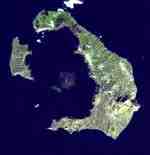
Thera
Santorini, Greece
-
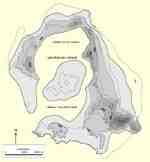
Pre-Eruption Minoan Thera
Santorini, Greece
-

Spring Fresco West Wall
Swallows Scene
Akrotiri, Santorini (Thera), Greece
-
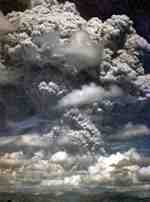
Mt. Pinatubo Eruption
Luzon, Phillipines
1991
-

Minoan Ladies in Blue Fresco
Knossos, Crete, Greece
-
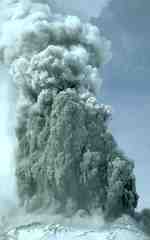
Volcanic Phreatic Eruption
-
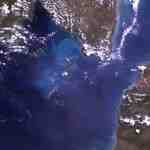
Krakatau
Sunda Strait, Indonesia
-

Minoan Miniature Frieze
Admirals Flotilla Fresco
Shipping Scene Restoration
West House, Room 5, South Wall
Akrotiri, Santorini (Thera), Greece
-
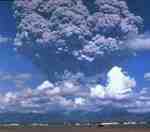
Mt. Pinatubo Eruption
Luzon, Phillipines
1991
-
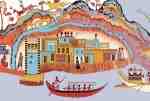
Minoan Miniature Frieze
Admirals Flotilla Fresco
Thera Restoration Scene
West House, Room 5, South Wall
Akrotiri, Santorini (Thera), Greece
-

Minoan Bull Leaping Toreador Restoration Fresco
Knossos, Crete, Greece
-

Volcanic Pyroclastic Surge
Montserat, Caribbean
1996
-

Minoan Dolphins Restoration Fresco
Knossos, Crete, Greece
-
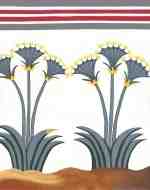
Minoan Sea Daffodils Lilies Restoration Fresco
Akrotiri, Santorini (Thera), Greece
-
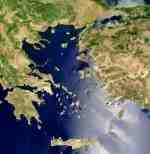
Aegean Sea
-
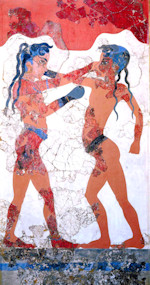
Minoan Boxing Boys Fresco
Akrotiri, Santorini (Thera), Greece
-

Anak Krakatau
Sunda Strait, Indonesia
-
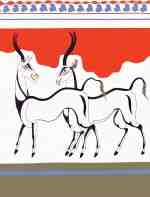
Minoan Antelope Restoration Fresco
Akrotiri, Santorini (Thera), Greece
-

Minoan Priest King
Feathered Prince of Lilies Fresco
Knossos, Crete, Greece
-

Anak Krakatau
Sunda Strait, Indonesia
-

Minoan Octopus Fresco
Knossos, Crete, Greece
-
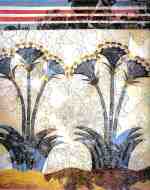
Minoan Sea Daffodils Lilies Fresco
Akrotiri, Santorini (Thera), Greece
-

Minoan Bull Leaping Toreador Fresco
Knossos, Crete, Greece
-

Minoan Antelope Fresco
Akrotiri, Santorini (Thera), Greece
-

Minoan Dolphins Fresco
Knossos, Crete, Greece
-

Knossos Reconstruction
Crete, Greece
-

Knossos Reconstruction
Crete, Greece
-
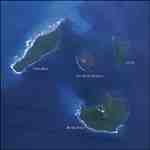
Krakatau
Sunda Strait, Indonesia
-

Krakatau Map
Sunda Strait, Indonesia
-

Volcanic Explosivity Index
VEI Scale
-
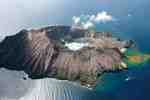
White Island Marine Volcano
New Zealand